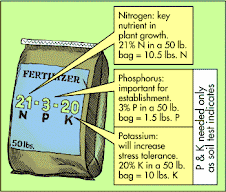
Where do I put features in my yard? That depends on style. Style is formal or informal. Formal tends to be symmetrical and balanced. Formal is usually more square and cornered than curved. In our illustration, symmetrical balance shows the same plants on either side of the door and house. The plantings are the same size. Things match. Informal is balanced in terms of visual weight and mass but not equal matches. Informal landscaping has curved beds, softer lines and balance obtained by visual weight without exact symmetry.
Style should complement and coordinate with the house and yard. A Victorian house tends to invite a more formal style. So does a traditional colonial. A log home, a country French, Tudor, ranch, cottage or any country style house invites informal, asymmetrical style. Informal is considerably more common than formal. The White House is formal. Our beautiful Kentucky log homes are informal. Most homes fall somewhere between. Symmetry has its place in country style landscaping but the materials or plantings might have a more casual air.
An informal home may have symmetry in its architecture. Informal landscaping will add interest to the symmetry. Formal landscaping will continue the symmetrical trend but might either crowd the house or be too repetitive. Asymmetrical home-style works well with informal landscaping. There are outsets and insets that are natural places for foundation beds.
 Tall homes like tall trees. Low slung ranch style is flattered by rounded landscaping that blends with long, low rooflines. Tall landscaping on the edges of the lot give the feeling of spaciousness and make a home appear larger. Avoid crowding large plantings near the front door, start with lower plantings and gain height as you move the design to the outer reaches of the yard.
Tall homes like tall trees. Low slung ranch style is flattered by rounded landscaping that blends with long, low rooflines. Tall landscaping on the edges of the lot give the feeling of spaciousness and make a home appear larger. Avoid crowding large plantings near the front door, start with lower plantings and gain height as you move the design to the outer reaches of the yard.Artful landscaping creates visual interest. A curved sidewalk or a straight walk with an extra angle is much more interesting than a straight shot. Everything in your yard is an invitation; to your door, to your back yard, to a secluded area in your back yard. Create a sense of place and destination whenever you can. An outdoor table and chairs or a bench create a place. Things that suggest a leisurely walk like a path or stepping-stones create destination.
The front door is the focal point of any house. If there is a porch, use this fortunate feature to add additional welcoming items. Place inviting chairs, flowerpots, evergreens in pots and plantings in beds around the porch. Change some of your front door landscaping with the seasons. Each day a front door will welcome and invite you cheerfully into your home. Your guests will feel it too.
Consider your chosen style when finishing your landscape plan. Take a photo of your house and make copies of the photo. Sketch some variations on the copies. Add this style to the landscape overview we did last week. This will give your landscape plan personality. Next week we will discuss plantings to fill out your landscape plan that fit with your chosen style.





